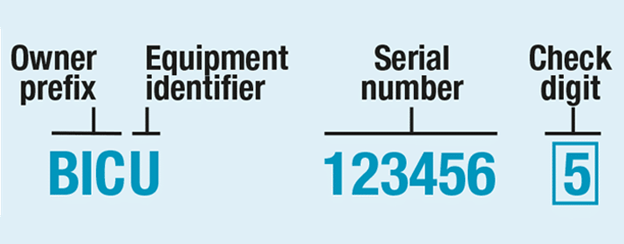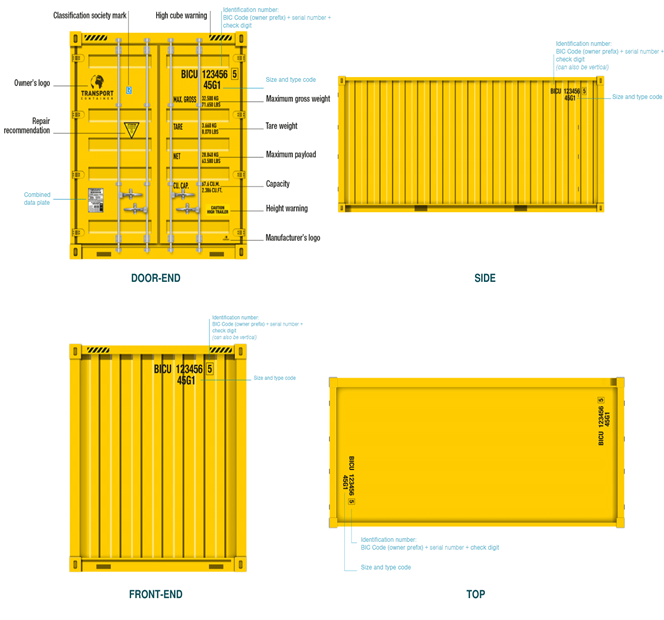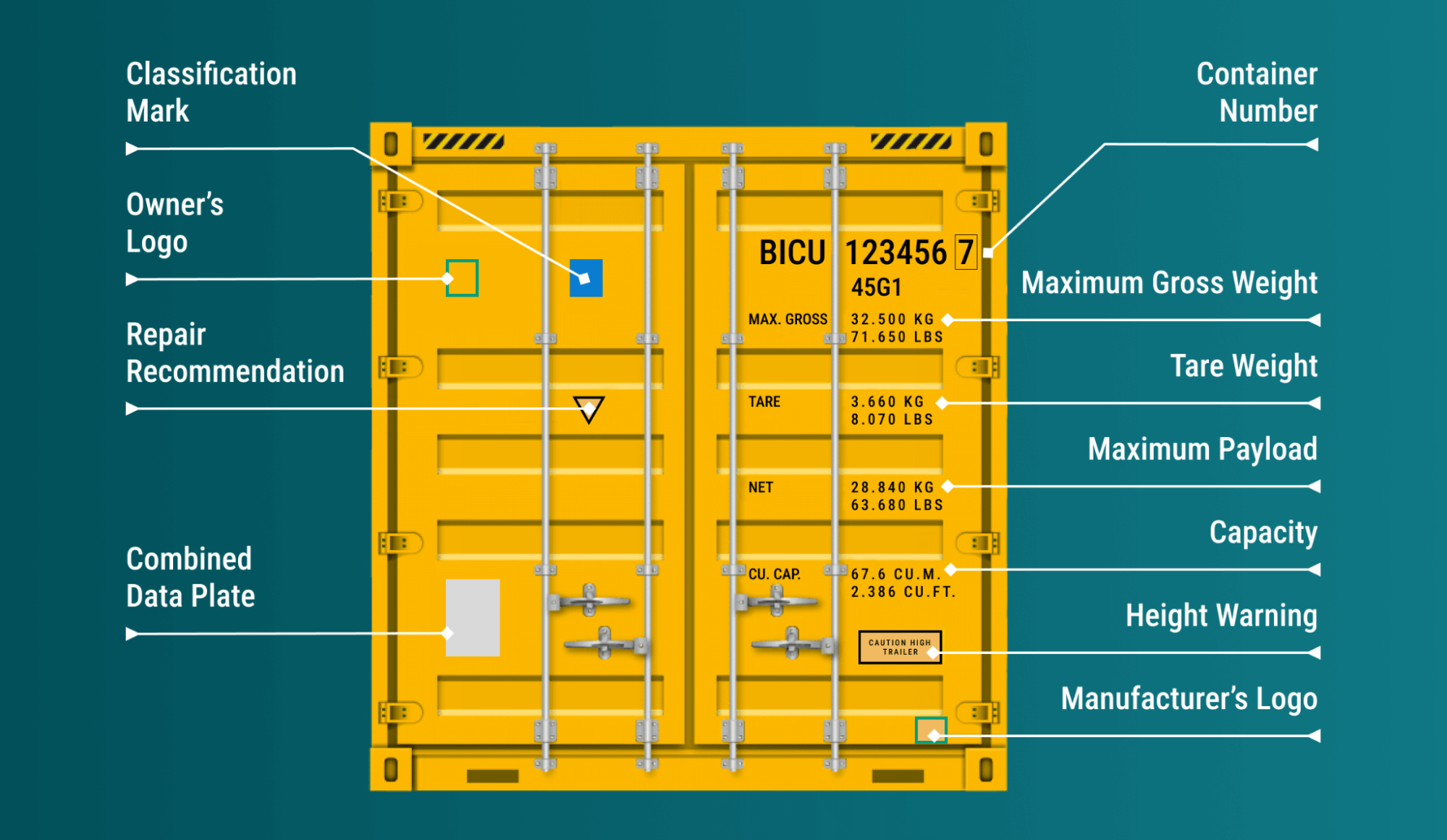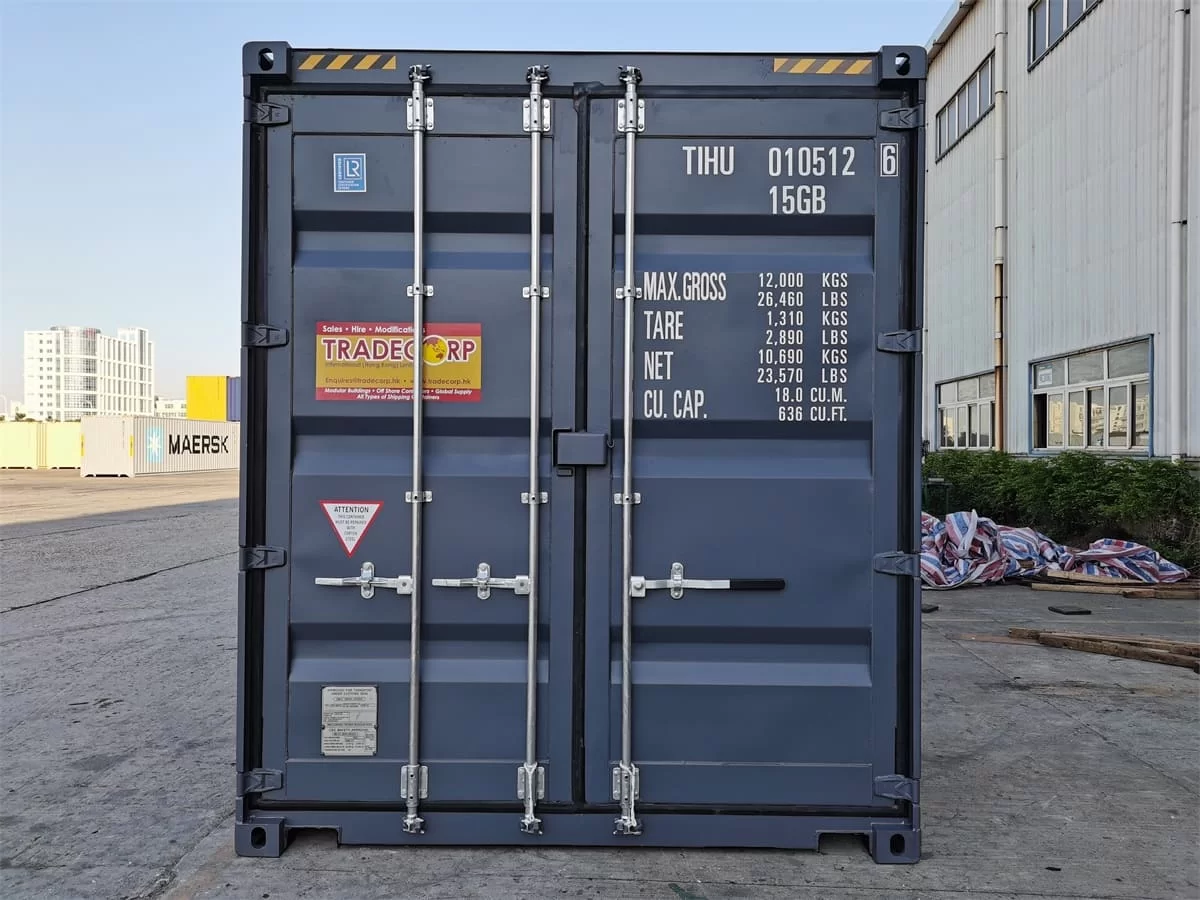Containers have become an integral part of modern international trade, they are required for transporting goods across the world. These containers are usually identified by unique numbers and markings, which provide important information including the container’s original owner, size, type, and other attributes.
For instance, the owner of the container is typically indicated by a logo, prefix, or company name, while the container’s unique identification number is printed on a metal plate and also as a number on the top right of the unit for easy viewing. Additionally, markings may indicate the maximum weight capacity of the container, its dimensions, and any hazardous materials that may be contained within.
Understanding container markings is crucial for anyone involved in the transportation or storage of goods. It can help ensure that the correct container is used for the job required and that proper safety protocols are followed. In this article, we will explore the various markings found on shipping containers and how to interpret them.
What Is a Container Number?
Container numbers are a unique combination of letters and digits assigned to shipping containers for tracking and identification purposes. The number consists of four letters, followed by six digits, and then a check digit. The first four letters of the code are called the prefix and represent the container owner along with the container’s equipment category. The six digits that follow are the serial number for the container. From these letters and numbers, the check digit is generated, and the check digit is used to verify that the container number is genuine.

Owner Prefix
An owner prefix code is a unique three-letter code used to identify the owner of a shipping container. It is also sometimes referred to as an “Owner’s Identification Code” (OIC). This code allows for easy identification of the container’s owner and makes up part of the container number used to facilitate tracking and management of the container during shipping.
The owner prefix code is assigned by the Bureau International des Containers (BIC), which is responsible for maintaining a global database of container owner codes. This ensures that each owner is allocated a unique code that is recognized and used internationally. You can check BIC codes here to identify the container’s owner.
Equipment Category Identifier
The Equipment Category Identifier (ECI) is a one-letter code used to identify the type of equipment being used for the transportation or storage of goods, including shipping containers. The ECI code is placed right after the owner prefix code on the container’s CSC (Convention for Safe Containers) plate.
Some examples of ECI codes for different types of containers include:
- U for all freight containers
- J for detachable freight container-related equipment
- Z for trailers and chassis
The ECI code is used globally to ensure consistency and efficiency in the transport and storage of goods.
Serial Number
A serial number is a unique identification number that acts as a registration number. It normally consists of a six-digit number composed by the owner of the container. The number is used by shipping companies, port authorities, and customs officials to identify the container and ensure that it is properly tracked and managed. The serial number is located after the owner prefix and ECI code.
Check Digit
A check digit is a single-digit number that is used to verify the authenticity of a container’s identification number. The check digit can be found after the container’s serial number.
The check digit is calculated off on the letters and numbers in the container number. The calculation uses a combination of multiplication and addition to generate a unique check digit that can be used to verify the accuracy of the container number. When the container number is entered into the BIC Check Digit Calculator, it’ll display the check digit that validates the container.
The check digit is an integral part of container identification as it helps to ensure the accuracy of the container number. It is used by shipping companies, port authorities, and customs officials to confirm that the container’s identification number is correct, and therefore the efficient tracking and management of the container during shipping and storage.
ISO Code
The sequence of four letters or digits known as the ISO code is typically located underneath the container number and provides information about the container’s type and dimensions. The first character of the ISO code denotes the length of the unit, and the second character indicates the height. The third and fourth characters determine the container type.
For instance, let’s break down the ISO code ’45G1′. In this case, ‘4’ denotes that the container is 40 ft in length, ‘5’ implies a high cube container, and ‘G1’ indicates that it is a general-purpose container.
Container Markings
Containers are also marked with various other symbols and information. These markings provide important information about the container’s size, type, weight, and other attributes, and they are used to ensure that the container is handled and transported correctly.
Other markings on a container may indicate its maximum gross weight, the date of manufacture, and various other details. These markings are typically stamped or painted onto the container’s exterior, and they are designed to be durable and visible in all weather conditions.
Container markings also include warning labels and placards, which provide important safety information about the container’s contents. For example, containers that carry hazardous materials are marked with hazard labels and placards that indicate the type of hazard and the appropriate precautions that should be taken.


Why Container Numbers and Markings Are Essential
It is important for anyone involved in the transportation and logistics industry to have a good understanding of container numbers and markings. This knowledge can help to ensure that containers are handled and transported safely and efficiently, and it can help to prevent accidents and other problems that can occur during the transportation of goods.
Identification: These details about the container’s country of origin, capacity, and maximum payload weight are important for customs officials, freight forwarders, and other stakeholders in the shipping industry, as they help to ensure that the container is being used in compliance with regulations and safety standards.
Tracking and monitoring: Container tracking systems use unique container numbers to monitor containers’ location, status, and movement in real-time. This information is shared with shippers, carriers, and other stakeholders to check on the containers’ whereabouts.
Safety: Properly marked containers can help ensure that the container is handled and transported safely. This includes ensuring that the container is loaded and secured correctly and that any hazardous goods are clearly labeled.
Compliance: Container markings are often required by law or regulation, particularly when it comes to the transport of hazardous materials. Ensuring that containers are properly marked can help shippers and carriers avoid penalties and fines.
Efficiency: Accurately marked containers help ensure that the right container is loaded onto the correct ship, train, or truck, which can help reduce delays and improve supply chain efficiency.
In summary, container numbers and markings are essential for the safe and efficient transportation of goods across the world. Container numbers provide a unique identifier for each container and allow for easy tracking and identification. Anyone involved in the transportation and logistics industry should have a good understanding of container numbers and markings to ensure the safe and efficient transport of goods.
Purchasing a Conex Box
Tradecorp has a wide range of customization options for shipping containers for sale. We will help you find the perfect container solution for your business or project needs. Find a variety of types and sizes of shipping containers, from standard ones to tanks, and customizable ones. We will have them ready for you at the best price. Fill out the contact form on our page and we will respond to your inquiry promptly.

